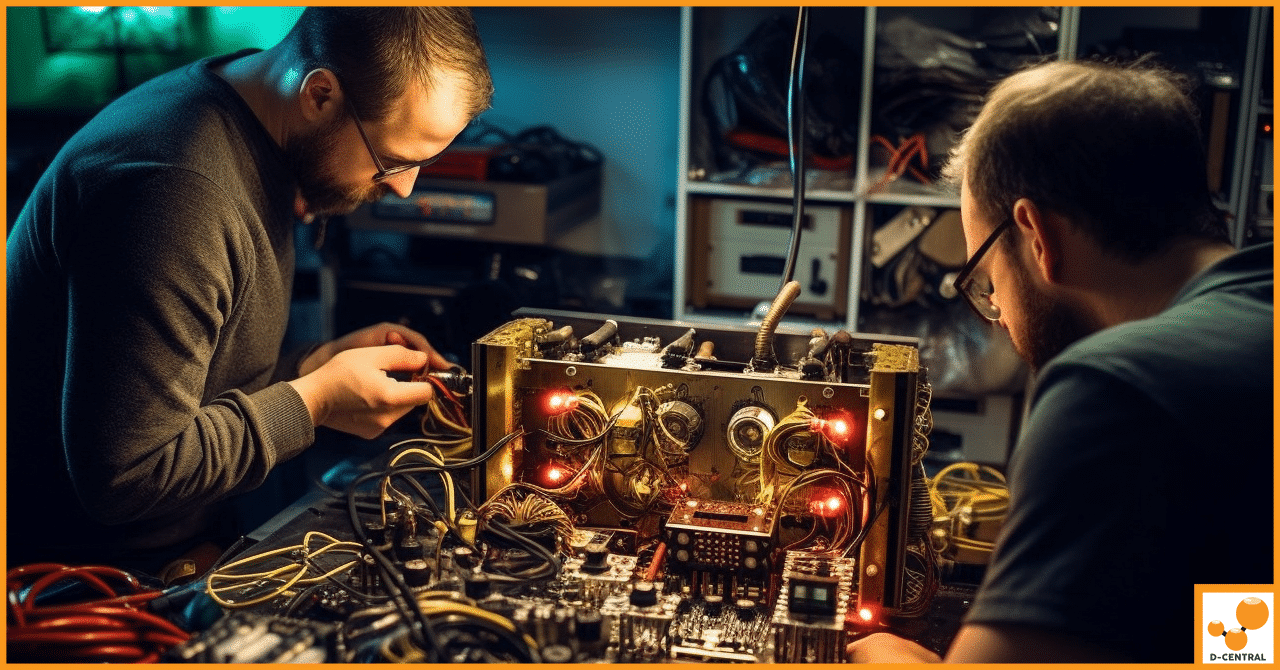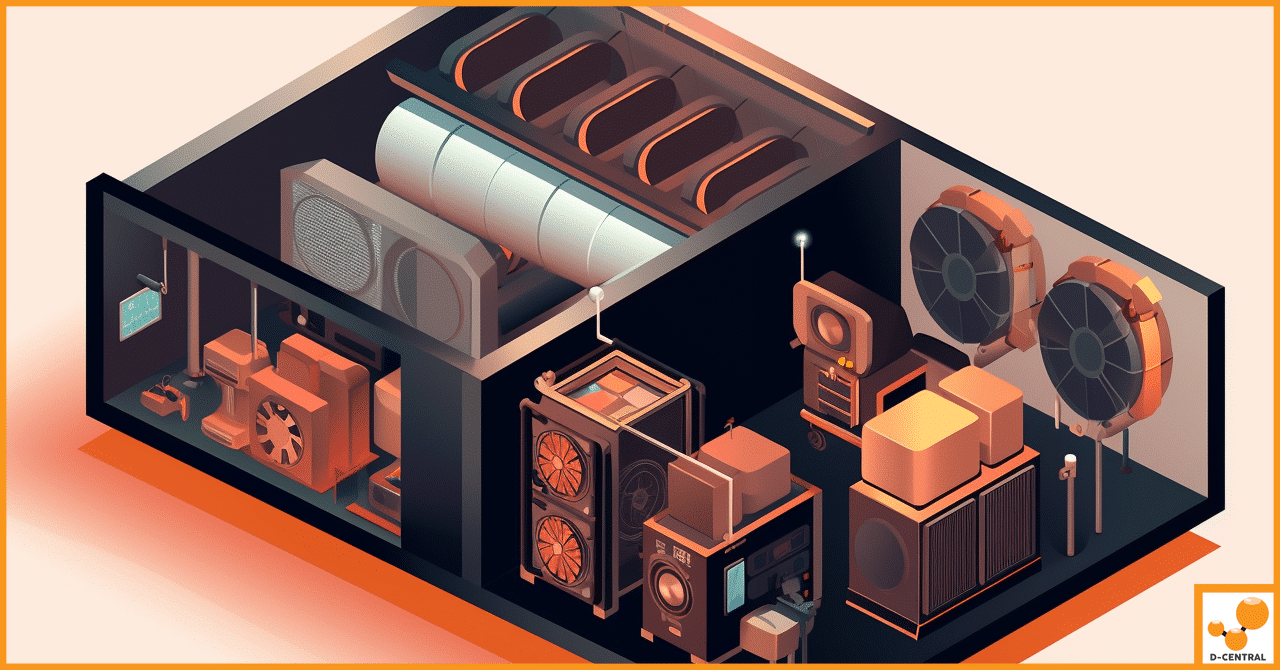
The Different 19 Series Models and Specs Compared: Which One is Right for You?
In the evolving landscape of cryptocurrency mining, selecting the right hardware is pivotal to success. The efficiency, cost-effectiveness, and longevity
4479 Desserte Nord Autoroute 440, Laval, QC H7P 6E2

n the intricate world of Bitcoin mining, Application-Specific Integrated Circuit (ASIC) miners stand as the backbone of the industry, driving the relentless pursuit of blockchain validation and cryptocurrency generation. These specialized devices, engineered to perform the singular task of mining cryptocurrencies, represent the pinnacle of mining efficiency and effectiveness. The evolution of ASIC miners from early general-purpose hardware to today’s sophisticated units underscores a relentless quest for optimization, mirroring the dynamic and competitive landscape of cryptocurrency mining itself.
The significance of ASIC miners in Bitcoin mining cannot be overstated. They are not merely tools but pivotal assets that define the operational capacity, competitiveness, and profitability of mining ventures. Unlike their predecessors, ASIC miners deliver unparalleled processing power with a precision focus on mining algorithms, offering a quantum leap in hashing performance. This leap is not just a technical advancement; it’s the very lifeline of mining operations, determining their viability in the face of escalating computational demands and the ever-tightening race for block rewards.
However, the high-stakes environment of Bitcoin mining, coupled with the relentless demand placed on ASIC miners, inevitably subjects these devices to intense operational stress. This stress, manifesting as thermal loads, electrical fluctuations, and continuous operation, can precipitate wear and tear, leading to diminished efficiency or outright failure. It’s here that the importance of maintaining ASIC miners comes into sharp focus. Regular maintenance and timely repair are not just operational chores but strategic imperatives that safeguard the miner’s operational efficiency and longevity. They ensure that these critical assets continue to operate at peak performance, minimizing downtime and maximizing the return on investment.
The realm of ASIC repair is intricate, necessitating a nuanced understanding of the hardware’s architecture and the potential fault lines that can compromise its operation. Testing and diagnostics emerge as the cornerstone of effective ASIC repair, embodying a systematic approach to uncovering and addressing the myriad issues that can beset these mining powerhouses. From functional testing that simulates real-world operational conditions to advanced diagnostics that delve into the micro-architecture of the ASIC chips, these techniques form the bedrock of a robust repair strategy. They not only facilitate the restoration of impaired units but also preempt potential failures, embedding resilience into the mining operation.
As we delve deeper into the world of ASIC miners, their critical role in Bitcoin mining, and the indispensable nature of maintenance and diagnostics, we uncover the layers of complexity and precision that underpin this high-tech endeavor. The journey through testing and diagnostics is not just a technical narrative but a testament to the relentless pursuit of efficiency and reliability in the quest to mine the digital gold of the 21st century.
Application-Specific Integrated Circuit (ASIC) miners are specialized hardware designed exclusively for cryptocurrency mining. Unlike general-purpose computing devices, ASIC miners are engineered with a singular focus: to execute the cryptographic algorithms required for mining digital currencies, most notably Bitcoin. This specialization allows ASIC miners to offer unparalleled efficiency and performance in the mining process, far surpassing the capabilities of earlier mining equipment like CPUs, GPUs, and FPGAs.
The primary role of ASIC miners in cryptocurrency mining is to solve complex cryptographic puzzles, a process central to the validation of transactions and the creation of new blocks within a blockchain. Each solved puzzle not only helps secure the network but also rewards the miner with a specific amount of cryptocurrency, incentivizing the continuous operation of these powerful machines.
ASIC miners achieve this by performing rapid, repetitive calculations to find the correct hash value that meets a specific condition set by the network’s difficulty level. Their ability to perform these calculations at an extraordinary speed, coupled with their energy efficiency, makes them the preferred choice for miners aiming to achieve profitability in the competitive landscape of cryptocurrency mining.
ASIC miners, while designed for durability and continuous operation, are not immune to a range of issues that can impair their performance or even lead to complete failure. Some of the most common problems include:
The decision to repair or replace a malfunctioning ASIC miner involves several considerations, primarily revolving around cost-effectiveness:
Timely diagnostics and repair play a pivotal role in the operational lifecycle of ASIC miners:
The need for ASIC repair and diagnostics is an integral aspect of managing a profitable mining operation. By understanding the common issues that can affect ASIC miners and recognizing the value of timely maintenance, miners can ensure their hardware remains efficient, reliable, and profitable over a more extended period. This approach not only safeguards the hardware investment but also contributes to the stability and security of the broader cryptocurrency network by maintaining a steady and efficient hashing power.
Each of these diagnostic techniques plays a vital role in maintaining the health and efficiency of ASIC miners. By employing a combination of these methods, technicians can ensure that miners operate at peak performance, contributing to the overall success and profitability of mining operations.
The maintenance and repair of ASIC miners require a suite of advanced diagnostic tools and equipment, each designed to uncover and address the complex issues that can arise in these specialized devices. From basic electrical measurements to in-depth circuit analysis, the arsenal of a technician is both varied and sophisticated.
Beyond these general diagnostic tools, the field of ASIC repair also utilizes specialized equipment known as ASIC repair testers. These devices are specifically designed to address the unique needs of ASIC miner diagnostics and repair.
Maintaining and repairing ASIC miners is a critical aspect of ensuring the longevity and efficiency of cryptocurrency mining operations. Adhering to best practices in diagnostics, repairs, and maintenance can significantly enhance the performance and reliability of these specialized devices.
By adhering to these best practices, mining operations can ensure that their ASIC miners remain in peak condition, minimizing downtime and maximizing profitability. Regular maintenance and careful repairs not only extend the life of the mining hardware but also contribute to the stability and security of the cryptocurrency network as a whole.
When it comes to maintaining the operational efficiency and longevity of ASIC miners, selecting the right repair service is crucial. The complexity and specificity of ASIC technology necessitate a repair service that not only understands the intricacies of these devices but also possesses the necessary expertise, experience, and equipment to diagnose and rectify issues effectively.
Choosing the right ASIC repair service is a critical decision that can significantly impact the efficiency and profitability of your mining operations. By considering factors such as expertise, experience, equipment, and the provider’s reputation, you can ensure that your ASIC miners receive the highest quality care, maintaining their performance and extending their operational life.
The intricate world of Bitcoin mining hinges on the seamless operation of ASIC miners, the workhorses powering the relentless pursuit of blockchain validation and cryptocurrency generation. The importance of rigorous testing and diagnostics in the maintenance and repair of these specialized devices cannot be overstated. It is the cornerstone upon which the reliability, efficiency, and longevity of ASIC miners rest. Through comprehensive diagnostics, potential issues can be identified and rectified before they escalate, ensuring that miners operate at peak performance and contribute optimally to the mining network.
Proper maintenance, underpinned by systematic testing and diagnostics, has a profound impact on the efficiency and profitability of Bitcoin mining operations. Regular upkeep and timely repairs not only extend the operational life of ASIC miners but also safeguard the substantial investment they represent. In the competitive arena of cryptocurrency mining, where every second of downtime translates to lost opportunity, the role of effective maintenance in sustaining operational continuity and maximizing returns cannot be overlooked.
Given the specialized nature of ASIC technology and the complexities involved in its maintenance, the need for expert intervention is clear. Consulting with seasoned professionals who possess the requisite knowledge, experience, and tools is crucial in navigating the challenges of ASIC repair and maintenance. Expertise in this domain ensures that your mining hardware receives the best possible care, tailored to its specific needs and operational demands.
In light of this, we extend an invitation to explore the comprehensive ASIC repair and maintenance services offered by D-Central Technologies. Our team of experts is equipped with the knowledge, experience, and advanced diagnostic tools necessary to provide top-tier maintenance and repair services. At D-Central Technologies, we understand the critical role your ASIC miners play in your mining operations, and we are committed to helping you maintain their efficiency and reliability.
We encourage you to reach out and discover how our services can support the optimal performance of your mining hardware, ensuring that your operations remain competitive and profitable in the dynamic landscape of cryptocurrency mining.
What are ASIC miners?
ASIC miners, or Application-Specific Integrated Circuit miners, are specialized devices engineered exclusively for cryptocurrency mining. They are optimized to execute cryptographic algorithms required for mining digital currencies like Bitcoin with unparalleled efficiency and performance.
Why is maintenance important for ASIC miners?
Regular maintenance and timely repair of ASIC miners are strategic imperatives that safeguard the miners’ operational efficiency and longevity. This ensures that the devices continue to operate at peak performance, minimizing downtime and maximizing the return on investment.
What common problems affect ASIC miners?
Common problems include thermal damage due to high heat generation, electrical failures from power supply issues, mechanical wear from continuous operation, firmware glitches, and dust or environmental damage impacting cooling and circuitry.
How is power analysis performed on ASIC miners?
Power analysis involves measuring the electrical parameters such as voltage, current, and power consumption of an ASIC miner to identify any electrical issues impacting its performance. Tools like multimeters, oscilloscopes, and specialized software are employed in this process.
What role does fault isolation play in ASIC repair?
Fault isolation helps in efficiently repairing ASIC miners by narrowing down potential causes of a problem to a specific component or circuit. It involves segmenting the miner’s operations, testing individual components, and using diagnostic firmware to precisely target repair efforts.
What are the benefits of timely diagnostics and repair for ASIC miners?
Timely diagnostics and repair can prolong the life of mining hardware by detecting issues early, maintaining optimal performance, maximizing energy efficiency, and extending hardware lifespan. This proactive approach reduces downtime, increasing profitability and contribution to network security.
What tools are essential for ASIC miner diagnostics?
Essential tools for diagnostics include multimeters for electrical measurements, oscilloscopes for signal analysis, thermal cameras for detecting overheated components, and logic and spectrum analyzers for more complex signal and interference analysis.
Why choose D-Central Technologies for ASIC repair and maintenance?
D-Central Technologies offers comprehensive ASIC repair and maintenance services with a team of experts equipped with the knowledge, experience, and advanced diagnostic tools necessary to maintain the efficiency and reliability of your miners. Their understanding of ASIC technology ensures your hardware receives the best care.
DISCLAIMER: D-Central Technologies and its associated content, including this blog, do not serve as financial advisors or official investment advisors. The insights and opinions shared here or by any guests featured in our content are provided purely for informational and educational purposes. Such communications should not be interpreted as financial, investment, legal, tax, or any form of specific advice. We are committed to advancing the knowledge and understanding of Bitcoin and its potential impact on society. However, we urge our community to proceed with caution and informed judgment in all related endeavors.
Related Posts

In the evolving landscape of cryptocurrency mining, selecting the right hardware is pivotal to success. The efficiency, cost-effectiveness, and longevity

In this ever-evolving era of digital currencies, harnessing technology’s prowess to maximize profitability and efficiency is key. At D-Central Technologies,

The innovative landscape of Bitcoin mining has never been without its unique set of challenges. Amidst these hurdles are significant